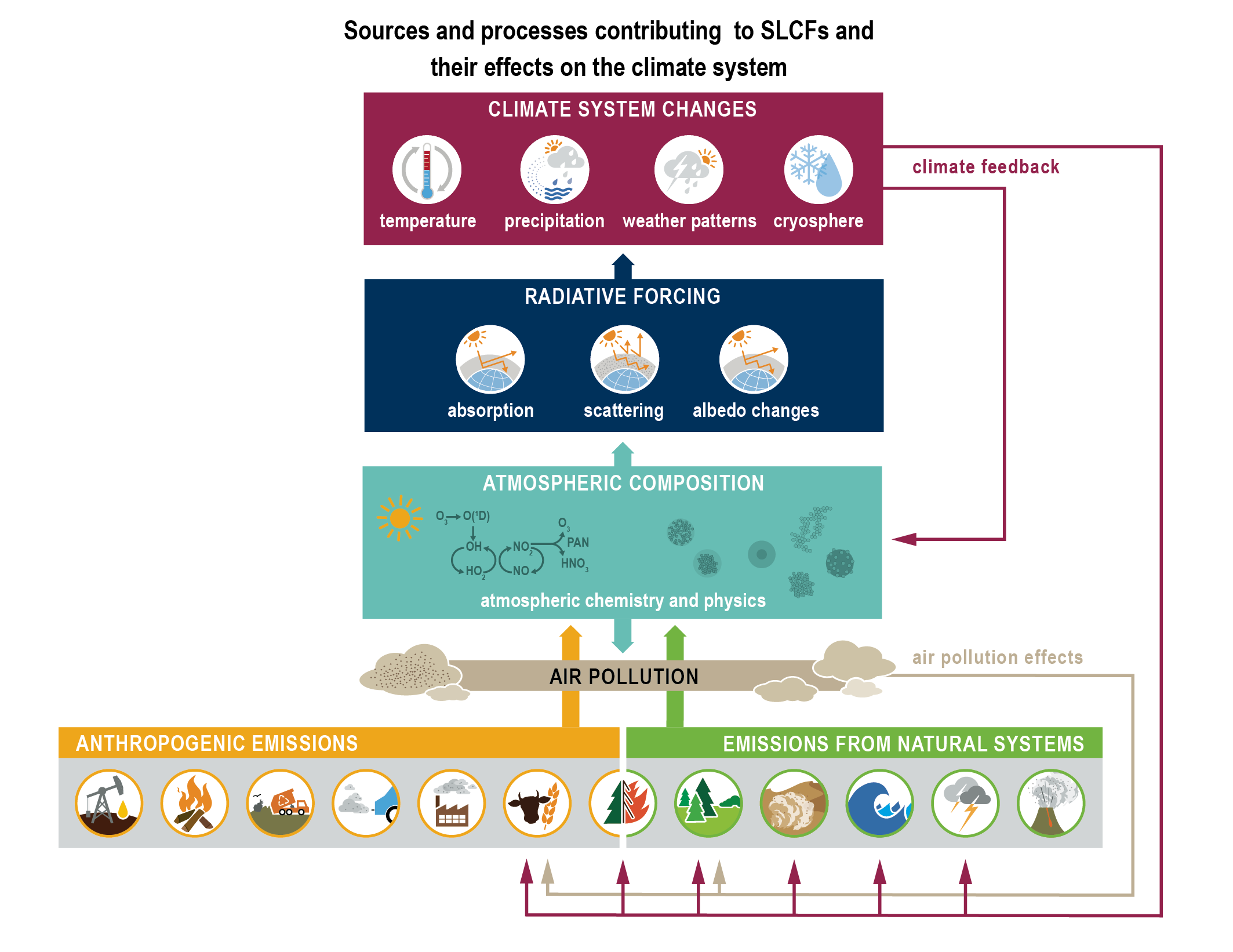Back chapter figures
Figure 6.1
Figure caption
Figure 6.1 | Sources and processes leading to atmospheric short-lived climate forcer (SLCF) burden and their interactions with the climate system. Both direct and indirect SLCFs and the role of atmospheric processes for the lifetime of SLCFs are depicted. Anthropogenic emissions sectors illustrated are: fossil fuel exploration, distribution and use; biofuel production and use; waste; transport; industry; agricultural sources; and open biomass burning. Emissions from natural systems include those from open biomass burning, vegetation, soil, ocean, lightning and volcanoes. SLCFs interact with solar or terrestrial radiation, surface albedo, and cloud or precipitation systems. The radiative forcing due to individual SLCFs can be either positive or negative. Climate change induces changes in emissions from most natural systems as well as from some anthropogenic emissions sectors (e.g., agriculture) leading to a climate feedback (purple arrows). Climate change also influences atmospheric chemistry processes, such as chemical reaction rates or via circulation changes, thus affecting atmospheric composition leading to a climate feedback. Air pollutants influence emissions from terrestrial vegetation, including agriculture (grey arrow).
